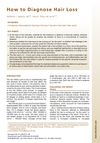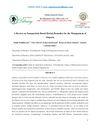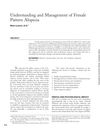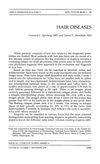[Acquired effluvium of head hair: common conditions in women].
October 2005
in “
PubMed
”
TLDR Hair loss in women can be caused by different conditions like hormonal changes, infections, or stress.
The document discussed various acquired disorders of hair growth in women, which could manifest as either effluvium or alopecia. The conditions covered included androgenetic alopecia, postpartum effluvium, tinea capitis, trichotillomania, and alopecia areata. Each of these conditions had distinct clinical presentations and underlying pathologies, contributing to hair loss in women.





